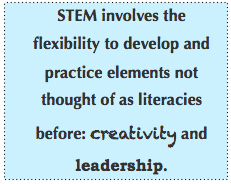I had the incredible pleasure of beginning my externship this past week with Novant Health of Rowan. When original notification that I would be partnering with Novant (in addition to Lenovo) occurred, I imagined the externship going the only avenue I could perceive it to, that being the shadowing of medical specialists. I assumed I would be obtaining a workable understanding of the communication and academic sets necessary to provide more than adequate patient care.
How very wrong some assumptions can be (and how one learns not to assume so quickly!)
As I came to realize in a short matter of time (yet failed to realize many years previously) in order to create the functioning system we as patients view as seamless, numerous teams must come together with individuals of a varying array of skill sets. Looking from the outside-in, it is easy to ignore the notion that the hospital is a cohesive unit for the extent of whom we interact with is limited to our primary care specialist. However, just as with our own community beyond our doorstep, there are members whom we don’t interact with that drive its inter workings.
On my first day, I had the distinct pleasure of meeting several department heads, as well as the administrative leaders within the Novant Health System of Rowan. When prompted with the question, “what is the Kenan Fellowship,” a spiral discussion on topics related to leadership, communication, and inquiry derived. Often, I directed a question to the department heads related to “what do you hope to see from this fellowship for Novant, as well as the students within Rowan-Salisbury Schools?”

And it was simple: all wanted our students to understand that the STEM approaches we consider separate, are interwoven amongst all areas. That when we think “health care,” we need to think beyond the stigma of “physicians and nurses.” We must understand that the hospital works much like a community, supporting one another in all assets of its mission: to promote high quality health care for patients. For instance, how many know that the Environmental Services Department (EVS) is actually a huge component that keeps the hospital running, and without it, the hospital would shut down in a matter of days? How many know that the Phlebotomist, Histotechnologist, and Pathologist are key to the diagnosis of your condition? How many know the leadership set necessary to be successful in any job? We must understand that the problems needing to be solved, alongside the skills necessary to do such, ought to be presented to students far earlier than the college lecture hall.
And within one day, and one discussion with the Food Services Director, additional characteristics and questions of self-accountability and leadership in relation to the classroom setting arouse:
1. How do we promote leadership development for our students?
2. How do we promote the concepts of communication and ethics in relation to managing diversity?
3. If our goal as a nation are to become a world competitor in STEM fields, then are we recognizing the relationship between how we utilize such knowledge, and its relationship to leadership?
4. Are we promoting leadership, STEM, and creativity as literacies for our students?
5. And as we move forward with such questions, we must then consider as educators are we allowing students the freedom, flexibility, and time to develop the creativity and leaderships skills necessary to solve problems within the working world?
6. Are we as educators streamlining STEM in a way that isolates the concepts, and harms our students from understanding that STEM IS interwoven and so much more than Science, Technology, Engineering, and Math?
Now my question becomes such: how do we as educators, or even as a country promoting STEM, move forward in planning a curriculum or classroom environment that addresses these deficits?



